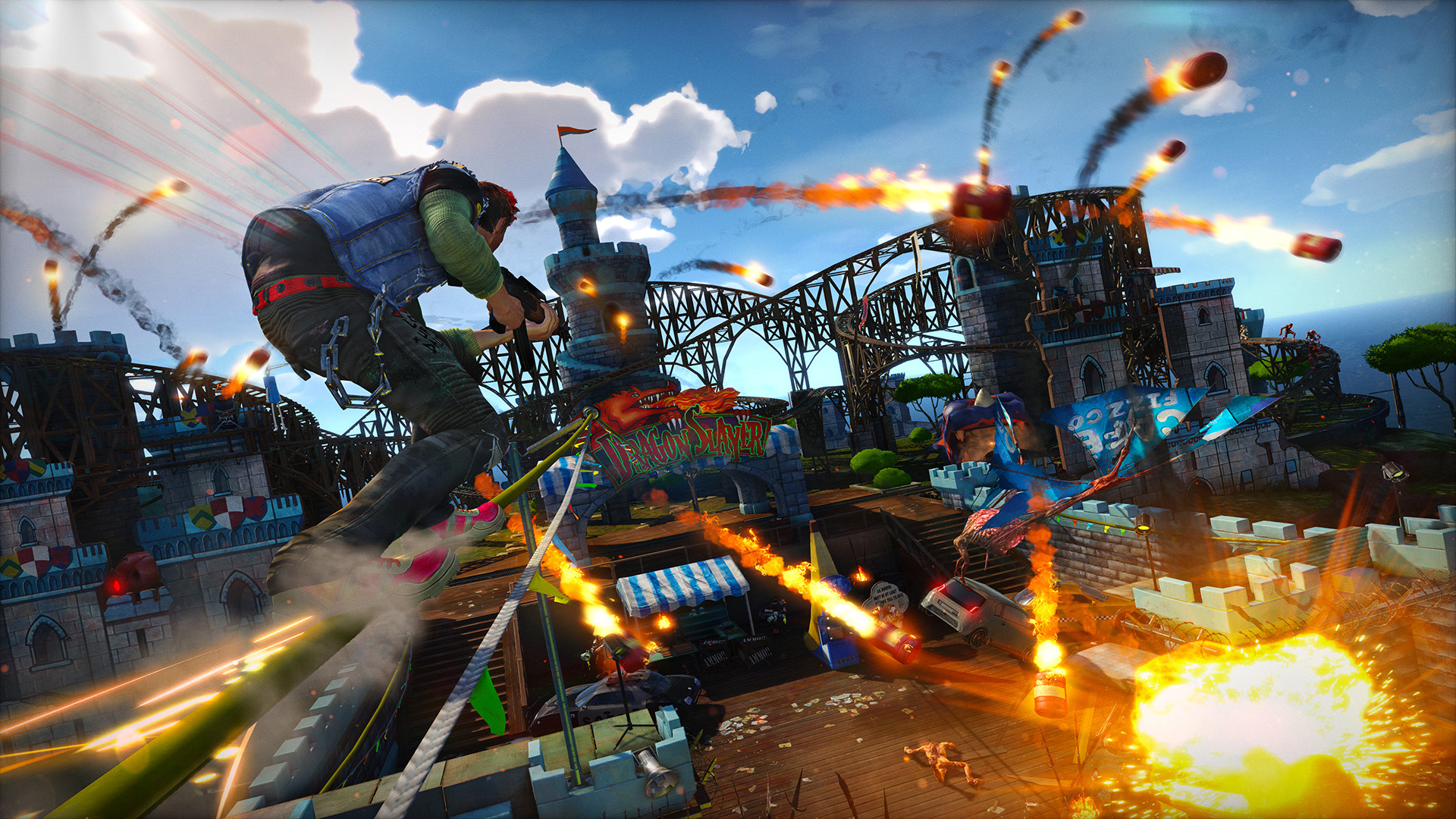Welcome to “A Comprehensive Guide on How to Watch Star Wars in Chronological Order”, brought to you by Game Revolution. Star Wars is an iconic movie franchise that has captured the hearts of millions of fans worldwide. The storyline of the Star Wars universe is vast and intricate, spanning across various movies, TV shows, books, and other content. It can be overwhelming for newcomers to know where to start and how to follow the story. This is where our guide comes in. In this article, we will explain the importance of following a chronological order while watching the movies, delve into the various options, and provide a comprehensive timeline of the Star Wars universe. If you are a first-time viewer or a seasoned fan wanting to revisit the story in chronological order, buckle up, and let’s jump right in.
Viewing Order Options
When it comes to watching the Star Wars movies, you have three primary options of chronological order, release order, or machete order. Each option has its advantages and disadvantages, making it essential to consider each before making your decision.
Release order is the most traditional way of experiencing Star Wars, as it is how the original movies were released in theaters. This means starting with the original trilogy and then watching the prequels and sequels. Release order allows for the same experience as original viewers had, enabling you to witness the progression of technology and special effects.
On the other hand, chronological order offers a unique perspective to the Star Wars universe by presenting events in chronological order. This allows for a deeper understanding of the universe’s lore, providing insight into the characters and events that led to the original trilogy. However, this option may not be the best for first-time viewers.
The machete order is a relatively new approach, which provides a unique narrative structure by rearranging the sequence of events in a way that enhances the original trilogy. This involves watching A New Hope, Empire Strikes Back, Attack of the Clones, Revenge of the Sith, and Return of the Jedi. The machete order is a great choice for fans who appreciate this unique approach to the series.
Considering all the options, we recommend watching Star Wars in chronological order for first-time viewers as it presents an opportunity to witness the Star Wars universe’s evolution. This order allows for a comprehensive understanding of the storyline without spoilers and may make the subsequent viewings of the movies more enjoyable.
Understanding the different viewing options makes it easy for you to choose the best option for you. Keep in mind that each option offers a unique experience, so choose the one that best suits your interests and preferences.
The Timeline of the Star Wars Universe
Whether you are a seasoned fan or a first-time viewer, understanding the timeline of the Star Wars universe is essential. The events in the Star Wars movies happen over several years and watching them in the correct order will provide a better understanding of the storyline.
The Star Wars timeline consists of three trilogies – the prequel trilogy, original trilogy, and sequel trilogy – which are the core of the franchise. George Lucas directed the prequel trilogy, consisting of Episode I to III, which serves as a prequel to the original trilogy. The original trilogy consists of Episode IV to VI, which is the story of the Rebellion and the Empire. The sequel trilogy is the most recent addition to the franchise, consisting of Episode VII to IX, and takes place 30 years after the events of the original trilogy.
In addition to the trilogy films, the Star Wars universe includes standalone movies, TV shows, and other content. These standalone movies fill in the gaps between the trilogies and provide a deeper understanding of the characters and the universe.
Overall, understanding the Star Wars timeline is crucial to enjoying the franchise completely, whether you are a new or seasoned viewer. Now that we have a clear idea of the timeline, let us move on to the next segment where we will discuss the recommended viewing order for first-time viewers.
Watching Star Wars in Chronological Order
If you’ve ever wondered about the correct order in which to watch the Star Wars saga, you’re not alone. With so many movies, TV shows, and other types of content, it’s easy to feel overwhelmed. Fortunately, following a chronological order can help you make sense of the storyline. Here’s a detailed breakdown of the order in which to view the movies, TV shows, and other content, along with where each item can be streamed or purchased.
The chronological order of the Star Wars universe starts with the Prequel Trilogy set before the original trilogy. It’s essential to know the storyline of the movies so that you have a basic understanding of the prequel era. Here’s the order of all the Star Wars content in chronological order:
– Star Wars: Episode I – The Phantom Menace
– Star Wars: Episode II – Attack of the Clones
– Star Wars: The Clone Wars (the animated TV show)
– Star Wars: Episode III – Revenge of the Sith
– Solo: A Star Wars Story
– Star Wars: Rebels (another animated TV show)
– Rogue One: A Star Wars Story
– Star Wars: Episode IV – A New Hope
– Star Wars: Episode V – The Empire Strikes Back
– Star Wars: Episode VI – Return of the Jedi
– The Mandalorian (TV series)
– Star Wars: Episode VII – The Force Awakens
– Star Wars: Episode VIII – The Last Jedi
– Star Wars: Episode IX – The Rise of Skywalker
It’s important to note that while The Clone Wars and Rebels are animated TV shows, they play a critical role in the Star Wars universe’s story. The Clone Wars depicts the journey of Anakin Skywalker from Padawan to Jedi Knight, and then his eventual turn to the dark side, while Rebels acts as a bridge between the prequel era and the original trilogy.
In terms of where you can stream or purchase each item, most of the Star Wars content is easily accessible on Disney+, along with the standalone movies Solo and Rogue One. Additionally, the original trilogy and prequel trilogy are available on various streaming platforms and in DVD/Blu-ray format.
Following this viewing order can help you appreciate the storyline’s complexity and nuances, which can get lost if you watch the movies and TV series out of sequence. The chronological order also provides context to the events and character developments that happen throughout the story, making for a richer viewing experience.
Special Considerations and Alternate Viewing Orders
When it comes to watching Star Wars, there are certain considerations to keep in mind. If you’re watching with young children or first-time viewers, you may want to take a different approach.
For young children, the intense action and themes of Star Wars can be overwhelming. You may want to start with the animated series Star Wars: The Clone Wars, which is more kid-friendly and introduces many of the concepts and characters.
For first-time viewers, the chronological order may not be the best option. The recommended viewing order for first-timers is the release order, which was how the movies were originally presented. This order allows for the same journey that earlier fans of the series experienced when the movies were released.
For those who are intrigued and want to expand their viewing experience, alternate viewing orders can be a fun option. The most famous alternate viewing order is the “Machete Order,” which involves watching the movies in a specific order to maintain the element of surprise and twist endings.
Additionally, given the vast amount of Star Wars content available across different platforms, keeping a timeline handy can be useful. Watching different pieces of content in a haphazard order can lead to confusion, and a timeline can help ensure that you’re getting the complete story.
By considering the needs of your audience and taking alternate viewing orders and special considerations into account, you can have the ultimate Star Wars viewing experience.
Final Thoughts on Watching Star Wars in Chronological Order
In conclusion, watching Star Wars in chronological order offers a unique and compelling viewing experience compared to other options. As we’ve discussed, there are numerous ways to enjoy the Star Wars saga, each with its own advantages and disadvantages. However, for those looking to start at the beginning of the series and enjoy it in chronological order, there is a recommended viewing order that includes all the movies, TV shows, and other content.
Starting with the prequel trilogy and working your way through the original and sequel trilogies, while interspersing the standalone movies and TV shows at the appropriate spots, allows for a complete and satisfying viewing experience. Moreover, this timeline also introduces viewers to essential plot points and characters that play significant roles in later content.
We highly recommend starting your Star Wars viewing journey in chronological order. It’s a great way to gain a comprehensive understanding of the universe and storyline, and appreciate the series in its entirety. So grab your popcorn, select the appropriate streaming service, and immerse yourself in the world of Star Wars today!
FAQs
1. What is the recommended viewing order for first-time viewers?
The recommended viewing order for first-time viewers is the chronological order. This allows viewers to experience the story in a sequential and cohesive manner.
2. What is machete order?
Machete order is a viewing order that suggests skipping Episode I and watching the original trilogy, then Episode II and III as flashbacks, followed by the sequel trilogy. This order is meant to focus on the main storylines and omit unnecessary content.
3. What standalone movies and TV shows should I watch?
Standalone movies that are important to the overall story include Rogue One and Solo. TV shows that are recommended include Star Wars: The Clone Wars and Star Wars Rebels.
4. Is it necessary to watch Star Wars: The Clone Wars and Star Wars Rebels?
Yes, both TV shows are important to the storyline and provide valuable context to the events of the movies. They’re also excellent in their own right.
5. What is the recommended viewing order for watching Star Wars content across different platforms?
If you’re watching across different platforms, it’s best to follow the chronological order for the movies and include Star Wars: The Clone Wars and Star Wars Rebels in between Episodes II and III. For the standalone movies and TV shows, watch them in release order.



